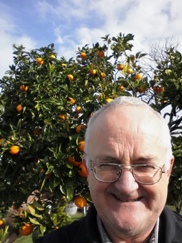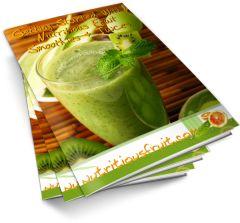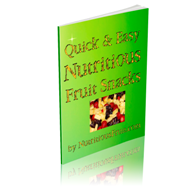Peaches: Nutrition Facts - Health Benefits - Origins - Consumption
|
|
|
Contents
- Nutrition Facts: Vitamins, minerals and phytochemical components
- Health Benefits: Medicinal uses based on scientific studies
- Geographic origin and regions grown
- History of consumption
- Common consumption today
- Bibliography
One of my favorite fruits, especially fully ripe and juicy straight off the tree. I'm lucky enough to have a tree right outside my back door. When fresh peaches aren't available the canned make a fine and popular alternative.
Vitamins, Minerals and Phytochemical Components
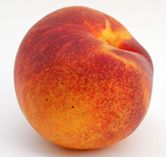 |
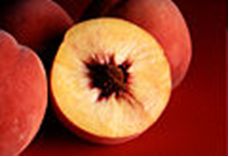 |
They contain Vitamin C, A, folic acid, niacin and dietary fiber. Minerals contained in them include: phosphorus, magnesium, calcium, selenium, iron, copper, manganese, zinc, and high amounts of potassium (1).
Medicinal Uses Based on Scientific Studies
They are naturally low in fat and calories as well as salt and cholesterol (2). Diets low in cholesterol can lower the risk of developing heart disease.
They are a good source of soluble fiber, which is known to lower cholesterol (3). These fruit are also a good source of Folate, vitamin C and the antioxidants Lutein and Zeaxanthin, that are known to detoxify the body (4).
Geographic Origins and Regions Grown
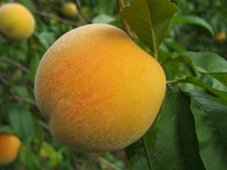 |
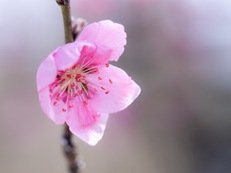 |
Early European beliefs suggest that they are native to Persia (now Iran). The modern botanical consensus is that they originated in China and were introduced to Persia and the Mediterranean region along the Silk Road centuries ago.
Cultivated varieties are divided into "freestone" and "clingstone" cultivars, depending on whether the flesh sticks to the seed or not. Both varieties can have either white or yellow flesh. The ones with white flesh are typically very sweet with little acidity, while yellow-fleshed fruits typically have an acidic tang accompanied by sweetness.
Both colors often have some red on their skin. Low-acid white-fleshed varieties are the most popular types in China, Japan, and neighboring Asian countries, while Europeans and North Americans have historically favored the acidic, yellow-fleshed types.
The trees grow very well in a fairly limited range of temperatures, since they have a chilling requirement that subtropical areas cannot satisfy and they are not very cold-hardy. The trees themselves can usually tolerate temperatures to around -26 °C to -30 °C, although the following season's flower buds are usually killed at these temperatures, which mean the trees will not bear any fruit during the summer.
Important historical fruit-producing areas are China, Iran, France, and the Mediterranean countries like Italy, Spain, and Greece. More recently, in the United States California, South Carolina, and Georgia have become three of the largest fruit producing states.
Canada, more specifically southern Ontario and British Columbia, as well as Australia (the Riverland region) have also become significant producers in the last few years. Oceanic climate areas like the Pacific Northwest and the British Isles are generally not satisfactory for their growing due to inadequate summer heat.
However, they are sometimes grown against the south-facing walls so they can absorb extra heat from the sun. Trees grown in a sheltered and south-facing position in the southeast of England are capable of producing both flowers and a large crop of fruit. Its trees are the second most commonly cultivated fruit trees in the world after apple trees.
History of Consumption
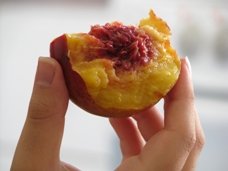 |
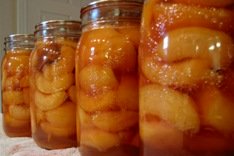 |
The tree (Prunus persica) belongs to the family Rosaceae and the subfamily Prunoideae and grows approximately 5 to 10 meters tall. This tree is classified with the almond in the genus Prunus and the subgenus Amygdalus.
It can be distinguished from the other subgenera by its corrugated seed shell. It is also possible to grow a tree from either a peach or nectarine seed, but the fruit quality of the resulting tree will be very unpredictable.
The leaves are lanceolate, 7-15 cm long, and 2-3 cm wide. The pink flowers blossom before the leaves in early spring, they are solitary or paired, 2.5-3 cm diameter, and have five petals. The fruit is a drupe, with a single large seed encased in hard wood (called the "stone" or "pit").
It has yellow or whitish flesh, a delicate aroma, and a skin that is either velvety or smooth (called nectarines) in different cultivars. The flesh of certain cultivars is very delicate and easily bruised, but is fairly firm in some commercial cultivars, especially when the cultivar is green.
The seed is red-brown, oval shaped, and 1.5-2 cm long. They, along with cherries, plums, and apricots, are all considered stone fruits (drupes).
The trees are prone to a disease called leaf curl, which usually does not directly affect the fruit but reduces the crop yield by partially defoliating the tree. The fruit is very susceptible to brown rot when the tree is in this state.
They should be located in full view of the sun and in areas with adequate air flow. This allows cold air to flow away on frosty nights and keeps the area cool in summer. They are best planted in early winter, as this allows time for the roots to establish and be able to sustain the new spring growth. When planting in rows, plant north-south.
The best tasting fruit is produced when they are watered throughout the season. Drip irrigation is ideal, at least one dripper per tree. Although it is better to use multiple drippers around the tree, this is not necessary. A quarter of the root being watered is sufficient.
They are known in China, Japan, Korea, and Vietnam not only as a popular fruit but for the many folktales and traditions associated with it. One such folktale is about Momotaro, one of Japan's most noble and semi-historical heroes, who was born from within an enormous peach floating down a stream. Momotaro or "Peach Boy" went on to fight evil and face many adventures.
Common Consumption Today
Usually, they are pealed and then eaten fresh. They can also be sliced, poached, candied, dried, cooked, canned or frozen.
In addition, they can be added to yogurt, ice cream, fruit salads or breakfast cereals. Jams, jellies, pies and soufflés can be made with the peach.
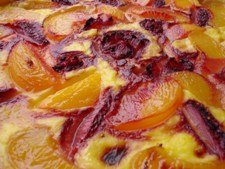 |
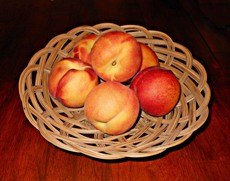 |
Bibliography
- FactsAboutFruit.com. (2007) Peach. Retrieved on October 23, 2007 from http://www.factsaboutfruit.com/Peach.html.
- Health-care-clinic.org. (2007) Peach. Retrieved on October 23, 2007 from www.health-care-clinic.org/fruits/peach.html.
- Jenkins DJ, Kendall CW, Nguyen TH, Teitel J, Marchie A, Chiu M, Taha AY, Faulkner DA, Kemp T, Wong JM, de Souza R, Emam A,Trautwein EA, Lapsley KG, Holmes C, Josse RG, Leiter LA, Singer W. (2007) Effect on hematologic risk factors for coronary heart disease of a cholesterol reducing diet. European Journal of Clinical Nutrition, 61(4):483-92.
- USDA Nutrient Database for Standard Reference. (2001) Fruit Nutrition Facts: Peaches Raw. Retrieved on December 11, 2007 from http://www.thefruitpages.com/chartpeaches.shtml
Disclaimer
Nutritiousfruit.com provides this website as a service. Although the information contained within the website is periodically updated, no guarantee is given that the information provided is correct, complete, and/or up-to-date. The materials contained on this website are provided for general information purposes only and do not constitute legal or other professional advice on any subject matter. Nutrtiousfruit.com does not accept any responsibility for any loss, which may arise from reliance on information contained on this website. The information and references in this website are intended solely for the general information for the reader. The content of this website are not intended to offer personal medical advice, diagnose health problems or to be used for treatment purposes. It is not a substitute for medical care provided by a licensed and qualified health professional. Please consult your health care provider for any advice on medications.
Didn't find what you were looking for? Search here...

Amazon Search Box:
Did you like this page?
|
|
|
